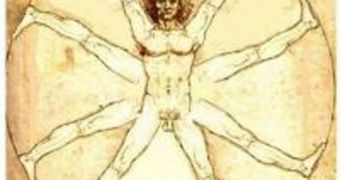A group of investigators from the Duke University says that a lot of knowledge can be extracted from the way the wheel evolved over time. The experts say that there is a massive difference between the wheels that appeared in the Neolithic Period and the ones that can be seen today in modern cars and bikes. According to Duke Pratt School of Engineering professor of mechanical engineering Adrian Bejan, the same line of evolution took place in humans, as well as in other species. Over time, the number of legs needed for locomotion diminished, until it reached a balance.
At first, wheels were stone-solid, with a single hole punched in the middle, for the axle. Over centuries, it developed to its more advanced forms, where spokes for instance replaced the solid disk. This allowed for a more even distribution of weight. When new materials became available, the number of spokes was reduced even further, all the way to the technology we have today. Crafty engineering is combined with state-of-the-art composite materials to create wheels that are extremely durable and wear-resistant, but also light, and therefore fuel-efficient.
“If you view animal movement as a 'rolling' body, two legs, swinging back and forth, perform the same function of an entire wheel-rim assembly. They also do it most efficiently – like one wheel with two spokes with the stresses flowing unobstructed and uniformly through each spoke. The animal body is both wheel and vehicle for horizontal movement,” Bejan argues. “An animal leg is shaped like a column because it facilitates the flow of stresses between two points – like the foot and hip joint, or paw and shoulder. In the example of the Neolithic stone wheel, the flow of stresses is between the ground and the whole wheel,” he adds. Details of the new work were published online, in the early edition of the esteemed American Journal of Physics.
The Duke professor is also a proponent of the constructal theory of design in nature. The idea basically states that in order for something to evolve over time, it must become able to move readily and freely through its ecosystem. “The constructal theory shows us this forward-falling movement is dictated by the natural wheel phenomenon, which is required for the minimal amount of effort expended for a certain distance traveled. The horse increases its speed by increasing the height from which it falls during each cycle. Then, from the trot to the gallop, the body movement changes abruptly such that the height of jump increases stepwise for each stride. Nature developed not only wheel-like movement but also mechanisms for changing speeds,” Bejan concludes.

 14 DAY TRIAL //
14 DAY TRIAL //